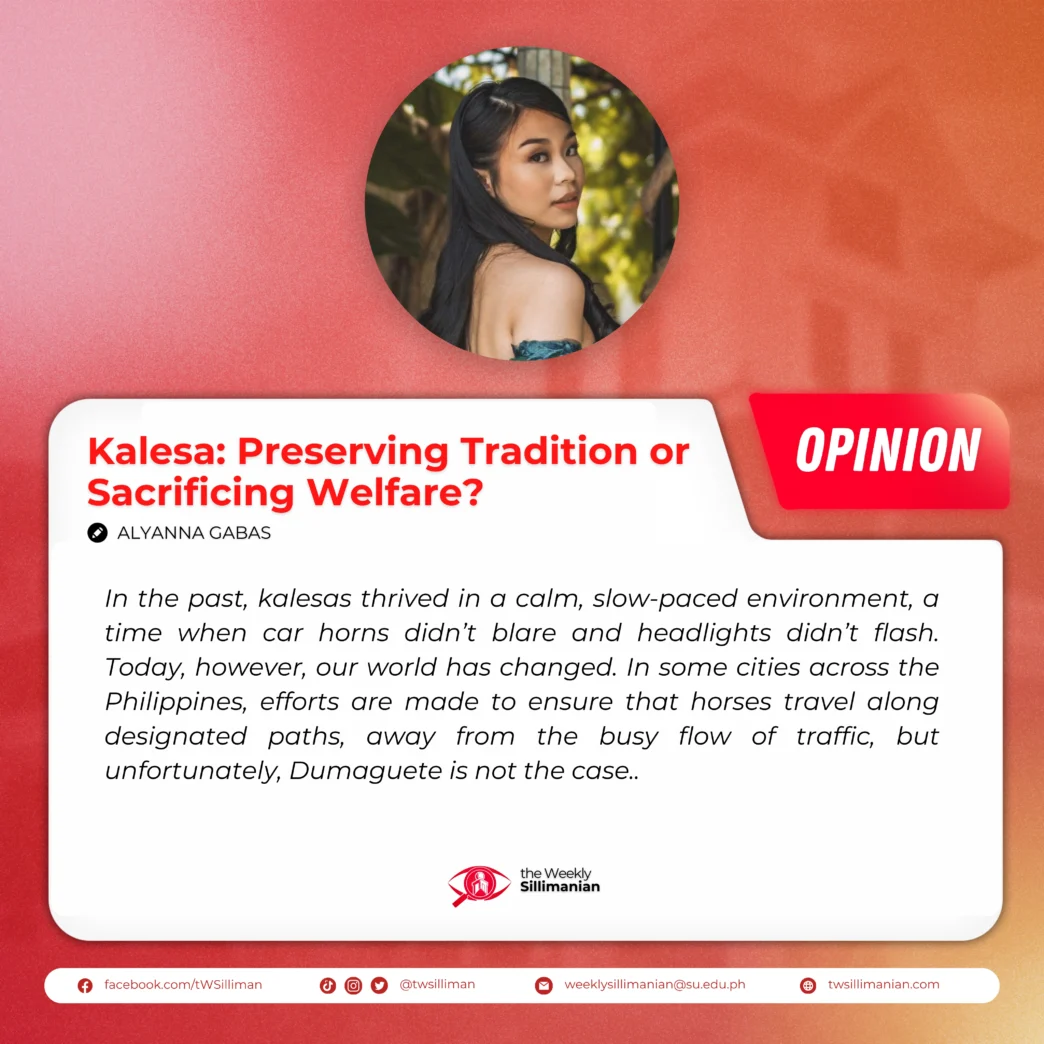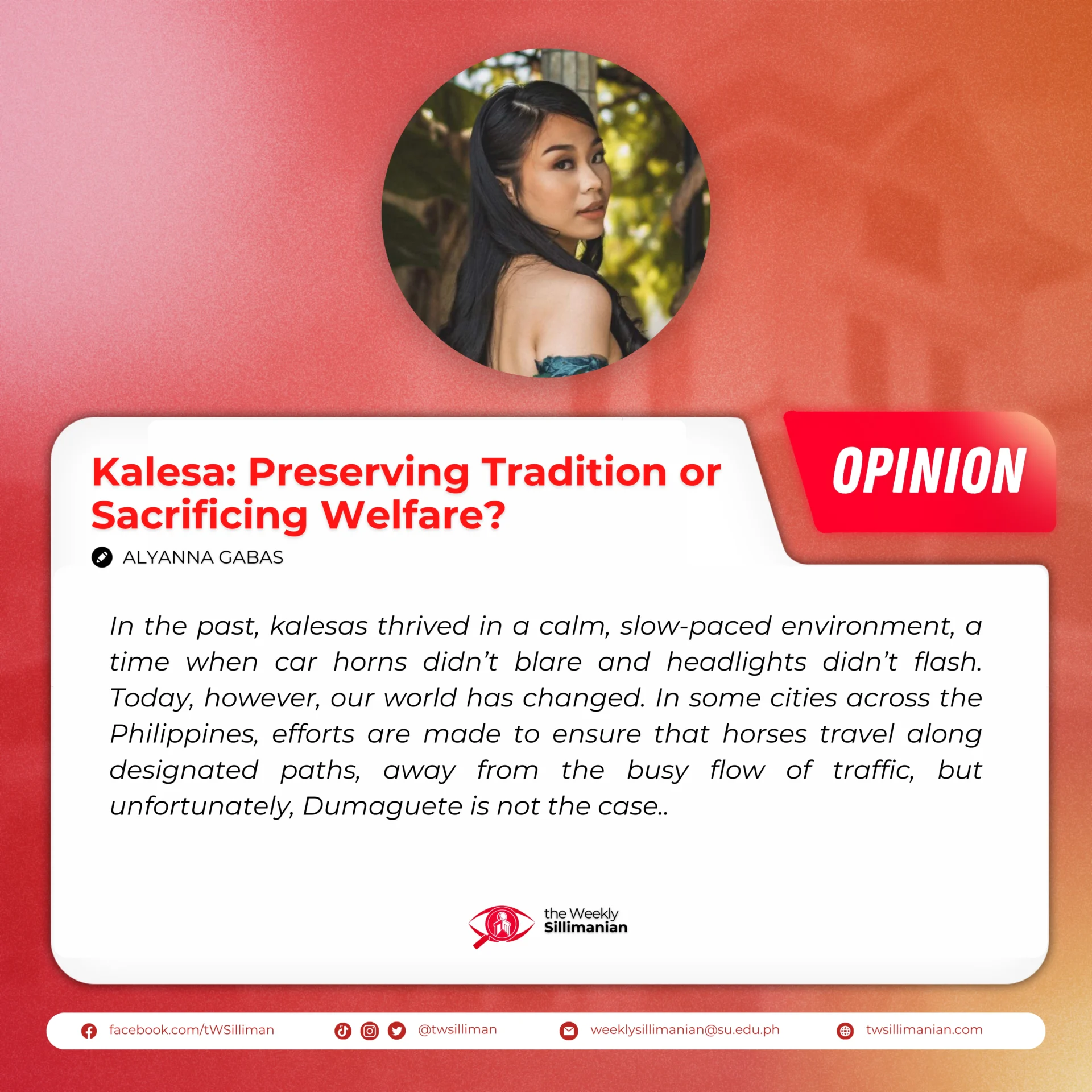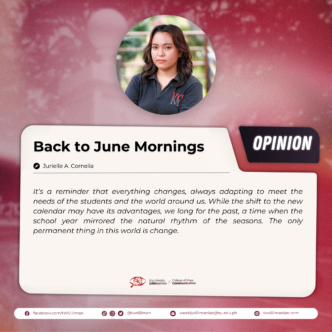By Alyanna Gabas
Walking along Dumaguete’s Boulevard at night never fails to mesmerize me. It’s not just the scenery that is captivating, but the people—their interactions, the families they bring, and the smiles they share in this space. However, among all the sights, one tradition consistently catches my attention: the kalesas. These horse-drawn carriages are a nostalgic reminder of our heritage. But as much as they preserve tradition, I can’t help but question—are they still ethical in today’s world, especially in Dumaguete’s bustling streets, where kalesas share the road with vehicles?
I remember my first and only kalesa ride vividly. I was in elementary school, and my cousin and I were enchanted by the brightly lit wagon and the horse pulling it. It felt magical at first, but halfway through our Boulevard tour, the horse began to sway its head erratically, appearing confused and startled. Moments later, its front legs collapsed, forcing the carriage to an abrupt halt.
The handler’s reaction was shocking. He slapped the horse repeatedly, cursing loudly as he pulled at its legs to force it to stand. That moment left a deep impression on me—not just because I wasn’t allowed to curse, but because of the sheer distress the animal was in. Looking back, I realized that the horse wasn’t just startled; it was overwhelmed. Its labored breathing, its tongue hanging out, and the saliva dripping from its mouth depicted exhaustion.
That experience altered my perception of kalesas. While I understand their cultural significance and the livelihoods they support, I began to wonder if it’s fair to continue subjecting these animals to the harsh realities of our urban environment. The quiet streets of the past are a far cry from the noisy, bustling roads of Dumaguete today.
Some may argue that measures like blinders, which narrow the horse’s vision, are enough to shield them from distractions. However, even with these precautions, horses are still exposed to the overwhelming noise, lights, and unpredictable traffic of Dumaguete’s streets. Is this really enough to ensure their well-being?
In the past, kalesas thrived in a calm, slow-paced environment, a time when car horns didn’t blare and headlights didn’t flash. Today, however, our world has changed. In some cities across the Philippines, efforts are made to ensure that horses travel along designated paths, away from the busy flow of traffic, but unfortunately, Dumaguete is not the case.
Some kalesa horses don’t even get proper breaks. In some cases, even during rest periods, the wagon remains attached, preventing the horse from truly resting. There are instances when they go without water for hours, and some are overloaded with passengers beyond their capacity.
As citizens of Dumaguete—and a nation that values its cultural heritage—we must now ask: Should we continue subjecting horses to an environment they were never meant to endure or should we explore more humane alternatives that support both the animals and those who rely on them for a living?
Tradition is important, but so is compassion. Preserving culture need not come at the expense of another being’s well-being.










